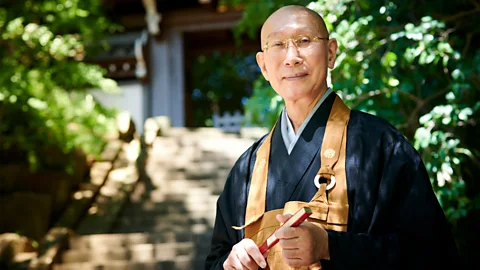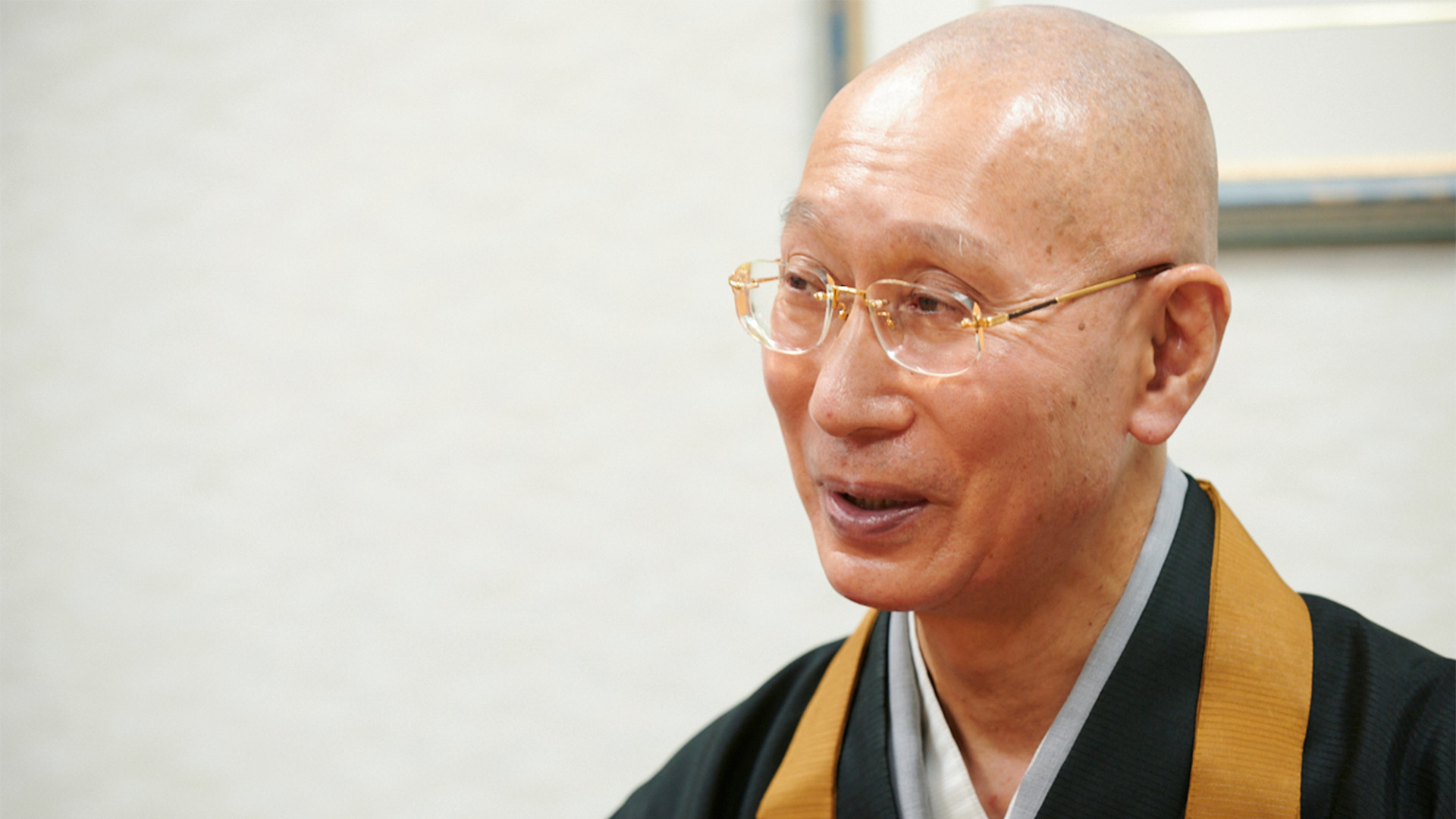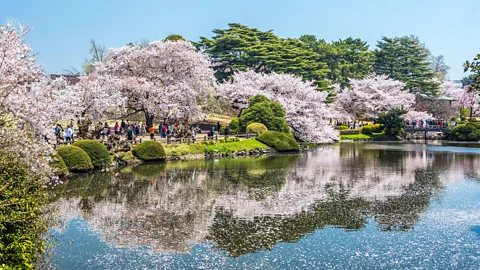A Zen monk's guide to the best gardens in Tokyo
 Japan Landscape Consultants
Japan Landscape ConsultantsShunmyo Masuno creates gardens that blend Zen philosophy with contemporary design. Here are his favourite green spaces in Tokyo – from cherry blossom havens to historical treasures.
Tokyo runs on pure adrenaline – crowds surge through stations and neon signs flicker late into the night. Yet amid the rush, its famous gardens offer calm. Many date to the Edo period (1603–1868) when the city, then called Edo, was the seat of the ruling shogun.

The SpeciaList
Shunmyo Masuno is a leading Japanese garden designer and Zen monk. His projects range from the Cerulean Tower Tokyu Hotel's garden to the Embassy of Canada's courtyard, with commissions across Japan and internationally. His books, including Don't Worry, bring practical Zen concepts to modern life.
(Credit: Japan Landscape Consultants)
These green spaces were crafted not just for beauty, but to invite visitors to slow down, breathe and rediscover stillness.
To find Tokyo's best gardens, we spoke to Shunmyo Masuno, a Soto Zen monk, chief priest of Kenko-ji temple – and one of Japan's leading garden designers. "With the shogunate in Edo, feudal lords kept residences here and built landscaped estates," Masuno says. "Those have become today's public gardens, carrying Edo culture forward even as the city races ahead."
While their origins were aristocratic, the spirit that shaped these gardens was deeply Zen – a philosophy that values minimalism, awareness and quiet observation.
"Japanese gardens can't be understood without Zen," Masuno explains. "Brought from China in the Kamakura period (1192–1333), it soon deeply influenced Japan's arts and design."
Masuno suggests exploring with an open heart. "Many visitors – especially from the West – seek logic and story," he says. "Set that aside. Sit, breathe, notice. Let feelings come before thought – if one insight stays with you, the visit succeeds."
Here are Masuno's favourite green spaces in Tokyo.
 Alamy
Alamy1. Best for cherry blossoms: Shinjuku Gyoen National Garden
Each spring, Japan celebrates hanami, when friends and families picnic beneath cherry blossoms.
A short walk from Shinjuku, Tokyo's busiest rail hub, Shinjuku Gyoen is where the city exhales. Built as an Imperial garden in 1906 and opened to the public in 1949, it offers rare quiet – broad lawns, curving ponds and tree-lined paths where people pause amid the rush. And when the cherry blossoms spill across its lawns and ponds, it becomes Tokyo's most beloved stage for hanami.
"Shinjuku Gyoen has an extraordinary number of cherry trees – roughly 900 across about 70 varieties," Masuno says. "Because cultivars bloom at different times, the season stretches from the first pale blossoms to the late-blooming pinks."
In Japan, drinking alcohol is usually part of hanami, but Shinjuku Gyoen is alcohol-free, which keeps the atmosphere calm and family friendly.
"Any season is beautiful," Masuno says. "Early summer brings roses; autumn, burnished leaf colour; winter, daffodils in clear air. But the best time is the spring bloom."
Website: https://fng.or.jp/shinjuku/en/
Address: 11 Naito-machi, Shinjuku-ku, Tokyo 160-0014
Instagram: @shinjukugyoen_info
 Getty Images
Getty Images2. Best for autumn colours: Rikugien Gardens
If hanami celebrates spring's blossoms, momijigari honours autumn's kaleidoscopic splendour. From mid-November into early December, people stroll gardens and hillsides under fiery maples, pausing for tea or a photo.
Go back to the same garden
"People often ask which garden to choose, or say they've already been," Masuno says. "Go again. Japanese gardens test the visitor as much as they display themselves; what matters is your capacity to see and feel. If you visit a year apart and your response hasn't changed, it isn't the garden that's stuck – it's your growth."
"Want the one place that makes Tokyo fall in love with autumn? Go to Rikugien," Masuno says.
Built in 1695, this Edo-period garden was inspired by waka poetry – 31-syllable verses inspired by nature and feeling. Each path bend and pine placement recalls a poem, turning the landscape into one you read as you walk.
Maples and ginkgoes frame the central pond, their reflections flickering across the water's surface. Stone lanterns lean from mossy banks, and from the hilltop teahouse, the city feels impossibly far away. "Paths rise and fall so the water disappears, then it suddenly bursts open before you," Masuno says. "You're guided – without noticing – from enclosed to open views. That rhythm is magic."
At peak season, roughly 400 Japanese maples (plus azaleas and ginkgoes – about 560 autumnal coloured trees in total) set the slopes on fire and the softly arched bridge makes picture-perfect viewpoints.
In 2025, a special nighttime viewing is scheduled from 28 November to 9 December, with full-garden illuminations. A day-time programme themed around "experiencing Japanese culture" runs from 18 October to 6 December, with try-it-yourself Edo Daikagura, a Japanese tea-brewing mini-lecture (some sessions in English).
Website: https://www.tokyo-park.or.jp/teien/en/rikugien/
Address: 6-16-3 Hon-komagome, Bunkyo-ku, Tokyo 113-0021
Phone: +81 3-3941-2222
 Getty Images
Getty Images3. Best for vintage Tokyo atmosphere: Hama-rikyu Gardens
Set on the edge of Tokyo Bay near Shiodome's glass towers, Hama-rikyu Gardens feels like a fragment of old Edo floating amid the modern skyline. Once a Tokugawa shogun's villa, later an Imperial retreat, it opened to the public in 1946. "This garden breathes with the sea," Masuno says. "Its pond rises and falls with the tide – the only one in Tokyo still linked to the bay."
Across its 25 hectares, echoes of Edo remain: a long cypress bridge over the pond, two 18th-Century duck-hunting grounds once used for falconry, and a 300-year-old black pine near the gate.
"In the Edo period, shoguns would gaze at this pond while composing waka poetry, or set boats afloat to enjoy music," Masuno says. "These gardens were social theatres: lords invited allies to stroll, drink sake and sit in tea rooms. Your taste and learning were on display, and people judged a lord by his garden – no expense could be spared."
After strolling the grounds, pause at the teahouse, floating lightly over the water, and enjoy a bowl of matcha.
For an atmospheric autumn visit, come during the Moon-viewing programme (31 Oct-5 Nov 2025) when the garden stays open late with soft lights, performances and night tours.
Website: https://www.tokyo-park.or.jp/teien/en/hama-rikyu/
Address: 1-1, Hama Rikyu-teien, Chuo-ku, Tokyo 104-0046
Tel: +81 3-3541-0200
 Alamy
Alamy4. Best for understanding the Edo era: Koishikawa Korakuen
In the Edo period, feudal lords poured their wealth into art, learning and landscaped retreats.
Slow your senses
"I often notice visitors chatting as they walk, and sometimes even eating on the move," Masuno says. "I'd gently ask that you pause, keep voices low and give the garden your full attention." Travellers should limit their phone use, too. "People can become absorbed in taking photos for social media… It's perfectly fine to take pictures – but only after you've really seen the place. Experience first; record later."
"Koishikawa Korakuen, built in 1629 by Tokugawa Yorifusa, first lord of the Mito Domain, is one of Tokyo's oldest Edo gardens," Masuno says. "It stands on the Koishikawa plateau beside today’s Tokyo Dome."
On the plateau's southern lip, the garden follows natural undulations to edit the view. "Scenes appear and vanish as you walk – that's how Edo gardens expand space," Masuno says. "Confucian ideas and classical Chinese taste were woven into the composition."
At the garden's heart, Daisensui Pond recalls Lake Biwa, Japan's largest lake, with an island representing Mount Hōrai – the mythical home of immortals in Chinese legend. Around it, pines, bridges, waterfalls and iris fields unfold in gentle succession.
The outsized boulders scattered through the garden aren't just for show – they signalled status. "In Edo, moving such rocks – often hauled from a lord's home province – was a declaration of power," Masuno says.
Each autumn (this year 10-20 October), the garden glows with gentle light: bridges and maples shimmer on the water, while projection mapping brings Edo scenes to life on the Karamon gate.
Website: https://www.tokyo-park.or.jp/teien/en/koishikawa/
Location: 1-6-6 Koraku, Bunkyo-ku, Tokyo 112-0004
Tel: +81 3-3811-3015
 Alamy
Alamy5. Best insider experience: Ninomaru Garden, East Gardens of the Imperial Palace
"Many people assume you can't go inside the Imperial Palace," Masuno says. "But the East Gardens are open to the public."
The East Gardens of the Imperial Palace are adjacent to the main palace, residence of Their Majesties the Emperor and Empress, occupying the expansive grounds of the former Edo Castle. Within this area lies the Ninomaru Garden.
Encircled by moats and set within the inner walls, it feels like another world. "You hardly hear cars – it's the calmest heart of central Tokyo," Masuno says.
Diverse trees and seasonal plantings mean there's always something to see. "It's excellent if you want to enjoy flowers." And, on a very lucky day, "you may even glimpse members of the Imperial Household riding in the distance – I've seen them myself."
Website: https://www.kikuyou.or.jp/higashigyoen/en.html
Location: 1-1 Chiyoda, Chiyoda City, Tokyo 100-0001
Tel: +81 3-3213-1111
BBC Travel's The SpeciaList is a series of guides to popular and emerging destinations around the world, as seen through the eyes of local experts and tastemakers.
--
If you liked this story, sign up for The Essential List newsletter – a handpicked selection of features, videos and can't-miss news, delivered to your inbox twice a week.
For more Travel stories from the BBC, follow us on Facebook and Instagram.
